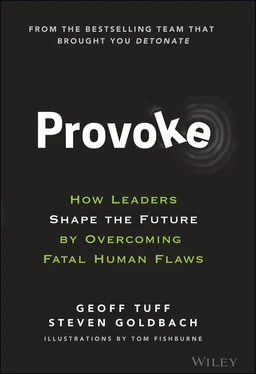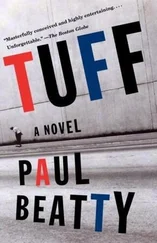Forming a new habit is easier when it's forced upon you by strong external circumstances like a pandemic. It's an entirely different thing to create a new habit when there are no forces acting in your favor. As a result, it takes real momentum to accomplish the goal of crossing the important inflection point of behavioral feasibility. Customers have to become aware of the trend, try it, repeat it, and often share the experience with others in some meaningful way for consumer feasibility barriers to be overcome. 7And by the way, we know some of you reading now are saying, “Does this really apply to my business, which is B2B?” The answer is 100% yes. You too have human beings making decisions about which products and services they buy, whom they get to bid on those services, and the organizational habits (or systems and processes) that they encourage regarding how they purchase from vendors.
Technical feasibility refers to the degree to which it is physically possible to do the things necessary to create the trend. For instance, Uber broke prior technical feasibility barriers by putting together their code with previously existing navigation capabilities. We know that self-driving cars are technically feasible. And the pandemic response showed that rapid vaccine development is also technically feasible, if other barriers can be lifted.
Regulatory feasibility answers the question of whether it's legal to create the trend. Regulations tend to be reactive to the market rather than proactive. To create a new market, you often must overcome existing regulatory barriers. Uber, for instance, challenged existing regulations around the world. Another example is how SpaceX is engaging with the Indian Telecom Regulatory Authority (TRAI), to help solve an important challenge – high-speed Internet access across India. It is looking to launch a constellation of satellites in lower orbit capable of providing 150Mbps service where the average speed for the country is around 12Mbps. The project is meant to overcome outdated regulations which were designed for different services to solve an important access issue. 8 Viability asks whether it's profitable to create the trend. The answer to this question is almost always murky. There are rarely any economic guarantees. What matters most is whether someone sees a sufficiently (to them) clear path to make money in the future to bet on taking the necessary steps to bring the trend to fruition. This is by definition a subjective question; two different organizations might look at the same opportunity and draw very different conclusions. But the viability test only requires one to take the bet. To some extent, it doesn't matter whether the venture is truly profitable in the long run because market creation may happen in advance of profitability (again, see Uber). True economic viability can only be determined in hindsight.
So what happened to the market for bidets in the United States? Did it continue to surge over the “if-to-when” phase change, or did it fail to create enough momentum? The latter. Bidets had some interesting short-term spikes in sales, but the spike did not turn into a long-lasting trend toward installing bidets in U.S. homes. Our hypothesis is that, while those who have tried bidets in the past may well be passionate about their superior cleaning experience, an insufficient number of Americans have seen a bidet, let alone tried one. The TP shortage didn't last long enough to get into true required behavior adaptation; it was only a concern about a potential future shortage. Therefore, people responded by hunting down every spare toilet paper roll they could find. The brief spike in bidet buying is more likely than not the result of people who had previously been on the fence now taking the “plunge” and using this push to get off the sidelines.
We similarly saw a spike in the trial of wet toilet paper usage, a market that has been unable to meaningfully grow beyond the niche group who swear by its use. In Steve's household, wet toilet paper was a short-term substitute. The Goldbach household was more than happy to see the Dude Wipes run out and the Charmin return.
While some may say hindsight is 20/20, we believe that understanding patterns of how humans behave and industries evolve is critical to forming hypotheses that should drive organizations to DO SOMETHING! earlier than they would otherwise. The trouble is that because of many “fatal flaws,” individuals and organizations fail to get to the starting line of forming these hypotheses about the future. In Chapter 3, we'll examine some of these human and organizational traits that create a narrowing of organizational peripheral vision leading to systematic blindness to emerging trends.
1 1. Ray Rivera, “Summerville Police Department Hands Out Roll of Toilet Paper Instead of Tickets,” Live 5, WCSC, March 19, 2020, https://www.live5news.com/2020/03/20/summerville-police-department-handing-out-toilet-paper-instead-tickets/.
2 2. On consumer habits, see A. G. Lafley and Roger L. Martin, “Customer Loyalty Is Overrated: A Theory of Cumulative Advantage,” Harvard Business Review, January–February 2017.
3 3. Brittany Frater, “It Took a Pandemic, but the US Is Finally Discovering the Bidet's Brilliance,” The Guardian, April 14, 2020, https://www.theguardian.com/us-news/2020/apr/14/us-bidet-toilet-paper-sales-coronavirus; Maria Teresa Hart, “The Bidet's Revival,” The Atlantic, March 18, 2018, https://www.theatlantic.com/technology/archive/2018/03/the-bidets-revival/555770/; Lisa Boone, “Bidet Sales Spike as Consumers Panic Buy Toilet Paper,” LA Times, March 16, 2020, https://www.latimes.com/lifestyle/story/2020-03-16/bidet-sales-spike-as-consumers-panic-buy-toilet-paper.
4 4. For more on the “Balanced Breakthrough Model,” see “What are the three things every idea needs to be successful?” at https://www.ideatovalue.com/inno/nickskillicorn/2019/01/what-are-the-three-things-every-idea-needs-to-be-successful-the-balanced-breakthrough-model/.
5 5. “Learn the Knowledge of London,” Transport for London, https://tfl.gov.uk/info-for/taxis-and-private-hire/licensing/learn-the-knowledge-of-london.
6 6. On e-readers, see Ethan Bronner, “Textbooks Shifting from Printed Page to Screen,” New York Times, December 1, 1998, https://archive.nytimes.com/www.nytimes.com/library/tech/98/12/biztech/articles/01school-etex.html; Anonymous, “E-Book Timeline,” The Guardian, January 3, 2002, https://www.theguardian.com/books/2002/jan/03/ebooks.technology; “Ebooks,” Statista, https://www.statista.com/outlook/213/102/ebooks/europe; Andrew Perrin, “One-in-Five Americans Now Listen to Audiobooks,” September 25, 2019, https://www.pewresearch.org/fact-tank/2019/09/25/one-in-five-americans-now-listen-to-audiobooks/.
7 7. Malcolm Gladwell, The Tipping Point: How Little Things Can Make a Big Difference (New York: Little, Brown, 2000).
8 8. Patricia Cooper, “TRAI Consultation Paper on Roadmap to Promote Broadband Connectivity and Enhanced Broadband Speed,” September 21, 2020, https://trai.gov.in/sites/default/files/SpaceX_10112020.pdf.
CHAPTER 3 Personal Patterns
Some of the stories that we use to bring concepts to life are fun to write: they're evocative, pleasant to remember, and the better ones are strangely apt. Others feel a bit cringe-worthy … because they are so archetypical as to sound ripped from the reels of a corporate training video. Here's the thing, though: not only is this story real, but versions of this story happen all the time to the two of us. We've sat through meetings countless times – and we're sure you have, too – where it's going well until someone makes a comment from which a pile-on ensues.
Читать дальше












